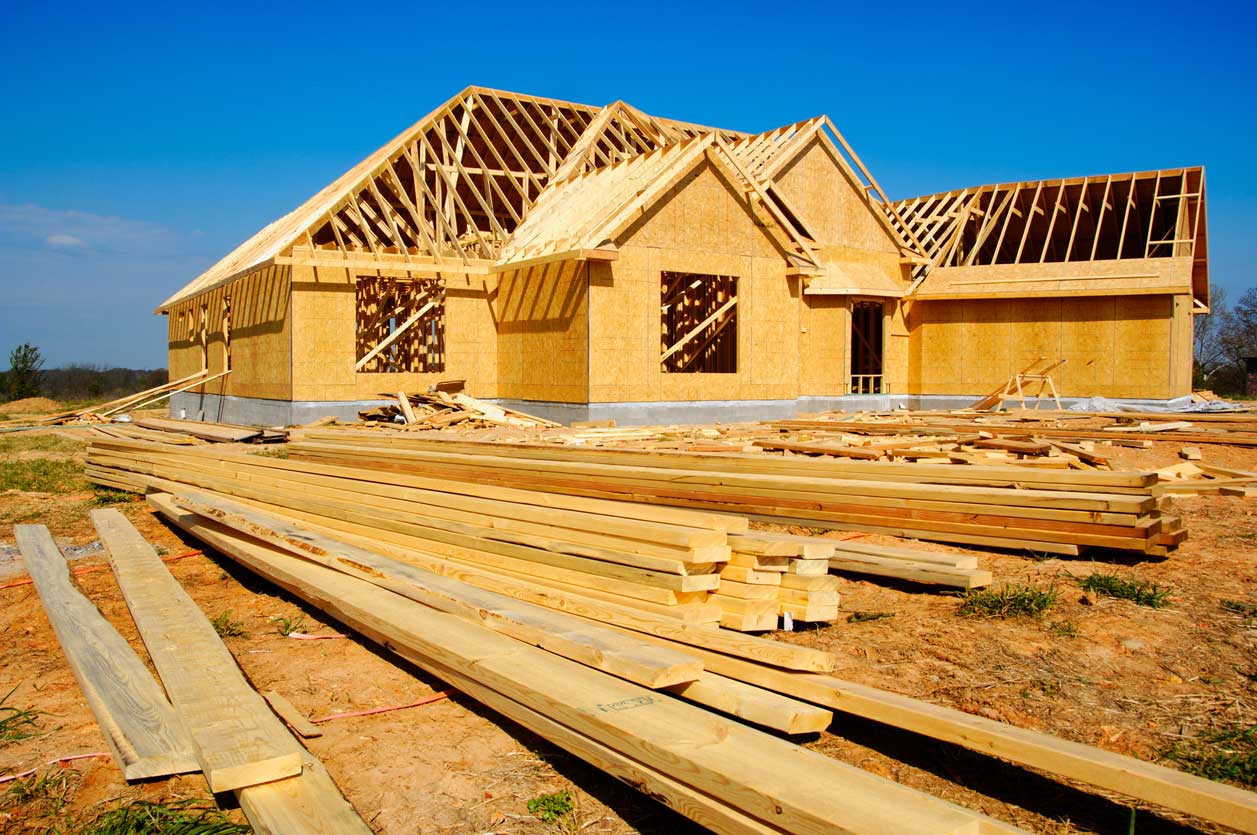Why Rent Prices Are Soaring and the Impact on Corporate Housing
The housing market has gone haywire causing home purchase and rent prices to go up. This trend has a direct effect on the cost of corporate housing.
by · Jan 6, 2022
The housing market has gone haywire causing home purchase and rent prices to go up. This trend has a direct effect on the cost of corporate housing.
Like everything else, the cost of corporate housing is going up.
Why?
While there are many factors that determine the rate for a corporate apartment, the monthly rent price is one of the biggest considerations. Apartment rent prices are directly correlated to higher corporate housing rates.
Unfortunately, apartment rental prices are increasing at a dramatic rate. Vacancy rates are incredibly low, but the demand is increasing. And as we learned in high school economics, when supply is low and demand is high, prices will certainly go up.
What is causing the current spike in rental prices? We’re going to look at several factors including:
But before we dive into the reasons for the spike in rental rates, let’s take a look at the actual trends.
The increase in rental rates has been nothing short of staggering over the course of 2021.
To understand just how crazy 2021 has been though, we must first look at the numbers from 2019 and 2020. In 2019, rental rates increased by 0.3% throughout the course of the year, and in 2020 the increase was 0.6%.
As of November 2021, rental rates have increased by double digits, which was unheard of in years past. Since January, the median rent for a 1 bedroom rental was up 12.1%, and the median 2 bedroom rental was up 13.2%. Zumper
The price increases for rentals are staggering, but when you take rental houses out of the mix, the rate increases are mind-blowing.
According to an October 2021 report from Apartment Guide, 1 bedroom apartment rents were up 19.8% year over year, and the average rents for a 2 bedroom apartment were up 18.9%.
Looking at this chart published by Apartment List, you can see an interesting deviation in the trend. The normal fluctuations typically ebb and flow in a seasonal pattern, but still trend generally upward.
Then, in March of 2020 things went haywire. Hmmm… I believe we’ve heard this one before!
Because of low demand (hello, lockdowns!) throughout 2020, we saw a general downward trend in apartment rental rates. People who would normally be looking to move in the spring of 2020, now had to stay put.
The service industry took a huge hit while lockdowns were in place leaving many young adults jobless. So, of the few apartment dwellers who did move in early 2020, many were those young adults moving back home with their families.
Even as lockdowns were lifted, it was still quite a while before anyone felt comfortable doing “normal things.”
As we got into the spring of 2021, the vaccine became available to the vast majority of the population. By summer, people started to feel a bit more comfortable being out and about—and it shows! Demand for apartments surged, and the apartment rents went right along with it.
 In the spring of 2020 when companies were forced to send their workers home, there was a fast adaptation to new technology. Companies had been slowly implementing the tools to connect teams from various locations. Now they had to quickly scale up that technology and put it into place in a big hurry.
In the spring of 2020 when companies were forced to send their workers home, there was a fast adaptation to new technology. Companies had been slowly implementing the tools to connect teams from various locations. Now they had to quickly scale up that technology and put it into place in a big hurry.
Zoom meetings, remote chat, and cloud file sharing became everyday life in corporate America. And for many companies, once they got the hang of remote working, it was a better long-term solution.
With the help of technology, employees were still able to be productive. And in many cases, they were much happier after giving up the commute.
Then when it became clear that many jobs would remain remote indefinitely, people started to realize…
“If I don’t have to be in the office to do my job, I can live wherever I want…”
As the number of remote workers soared throughout 2020 and 2021, a trend emerged away from the urban centers.
Since it was no longer necessary to live close to work, people took stock of where they really wanted to live. And while it was fun to live downtown where everything you needed was within walking distance, that also meant being in close contact with strangers.
The suburbs and smaller cities became desirable again for a variety of reasons. Whether it was more space to spread out or just a preference, many were headed out of the larger cities.
An analysis of migration data published by Apartment List determined that the people moving out of the urban centers were coming into those smaller cities with a higher income. Meaning that most also had a much higher housing budget to work with.
Many of these new residents would likely have been homebuyers in a typical market. But because of skyrocketing home prices, owning a home was still out of reach.
In looking at the rental trends in some of the areas Viciniti serves, this trend away from the larger cities is evident.
Rent Growth since March 2020 / November Year-Over-Year
|
City |
Since March 2020 |
Year-Over-Year Growth |
|
*Des Moines, IA |
7% |
4.8% |
|
Urbandale, IA |
9% |
8.8% |
|
*Omaha, NE |
9% |
8.2% |
|
Lincoln, NE |
13% |
11.2% |
|
*St. Louis, MO |
6% |
5.9% |
|
O’Fallon, MO |
18% |
16.9% |
|
*Kansas City, MO |
7% |
7.3% |
|
Overland Park, KS |
12% |
11.5% |
|
Wichita, KS |
14% |
10.2% |
|
Little Rock, AR |
12% |
7.5% |
|
Oklahoma City, OK |
17% |
13.7% |
|
*Dallas, TX |
12% |
14.3% |
|
Plano, TX |
21% |
22.5% |
|
*Austin, TX |
19% |
24.2% |
|
Round Rock, TX |
25% |
27% |
|
*Houston, TX |
7% |
9.6% |
|
Sugarland, TX |
16% |
15.2% |
|
*New Orleans, LA |
2% |
5.6% |
|
Baton Rouge |
14% |
10.8% |
*Core urban cities served by Viciniti
Data from Apartment List National Rent Report, November 1, 2021
In a recent article, we talked about the absolutely insane housing market that pushed the cost of houses through the roof starting in the summer of 2021.
This trend meant that many first-time home-buyers were priced out of the market. So instead of leaving the rental market, they were forced to put those house goals on hold.
Keeping this demographic in the rental market drove the vacancy rates lower, creating a higher demand. With the higher-income renters remaining in the rental pool, landlords were able to charge more, driving up the rental prices.
 It isn’t just resale homes that are adding to the strain on the housing market. New single-family houses are taking longer to complete (at a higher cost) due to supply chain issues.
It isn’t just resale homes that are adding to the strain on the housing market. New single-family houses are taking longer to complete (at a higher cost) due to supply chain issues.
Dozens of cargo ships are sitting off the port of Los Angeles. A strained labor market in California has made dock workers and truck drivers even more scarce than ever. And fewer people moving products around the country means longer wait times. It also means higher prices to cover the increased cost of getting those products from one place to another.
As a result, home builders are not able to keep up with demand, and there are fewer homes being built than there are households entering the population.
This isn’t new. It is a trend that has been going on since the mortgage rates made a big jump in the ‘70s and ‘80s. But add pandemic-related issues to the mix and the gap keeps getting wider. FreddieMac
In a construction environment that was already struggling to keep pace with the demand for new housing, these slowdowns have put more strain on the other parts of the housing industry.
Looking ahead, reports are showing a move toward more normal patterns. Although experts don’t believe rent prices will return to pre-pandemic levels, they are seeing some positive trends.
Since September, existing home sales have been slightly less frenzied. Likewise, in November, median rental prices went down month-over-month for the first time this year.
In both the home sales and rental markets, experts are predicting a return to the seasonal trends. This is great news, but the damage done to the affordability of housing in both the home sales and rental markets will not be undone anytime soon.
With so many factors driving up apartment rental prices, corporate housing prices are forced to go up as well.
If you are relocating, between homes, or otherwise in need of temporary housing, let the experts at Viciniti help you navigate the process.
With local offices in many midwestern cities, they understand the local economies and can recommend corporate apartments that will fit your budget. Browse the apartments available in the city where you’re headed to learn more. Then contact us to get started!
